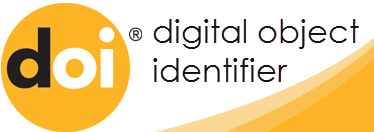BLENDED LEARNING METHOD IN ENGLISH TEACHING AND LEARNING
Abstract
This article reviews the research related to the use of blended learning in English as a second/foreign language context. Blended learning is a relatively new field that combines traditional learning approaches with distance and online learning. Blended learning (BL) is a popular educational approach that combines online and offline learning to promote active learning and improve student outcomes.
Keywords: blended learning, methods, online, face-to-face learning, ESL and EFL.
References
Guskey, T. R. (2000). Evaluating Professional Development. Thousands Oaks: Corwin Press.
Oxford Group, (2013). Blended learning-current use, challenges and best practices. From http://www.kineo.com/m/0/blended-learning-report-202013
Bonk, C.J., & Graham, C.R. (2012). The handbook of blended learning: Global perspectives, local designs. San Francisco, CA: John Wiley & Sons.
Garrison, D.R., & Vaughan, N.D. (2008). Blended learning in higher education: Framework, principles, and guidelines. San Francisco, CA: John Wiley & Sons.
Graham, C.R. (2006). Blended learning systems. In Bonk, C.J. & Graham, C.R. (Eds.). (in press). Handbook of blended learning: Global Perspectives, local designs. (3-21). San Francisco, CA: John Wiley & Sons
Graham, C.R., Allen, S., & Ure, D. (2005). Benefits and challenges of blended learning environments. In M. Khosrow-Pour (Ed.), Encyclopedia of information science and technology (pp. 253-259). Hershey, PA: Idea Group.
Graham, C.R., Allen, S., Ure, D., (2003). Blended learning environments. A review of the research literature. Unpublished manuscript, Brigham Young University.
Neumeier, P. (2005). A closer look at blended learning: Parameters for designing a blended learning environment for language teaching and learning. ReCALL, 17, 163–178. doi:10.1017/S0958344005000224.
Picciano, A.G., Dziuban, C., & Graham, C. R. (2013). Blended learning: Research perspectives. New York, NY: Routledge Publication.
Zhang, W., & Zhu, C. (2018). Comparing learning outcomes of blended learning and traditional face-to-face learning of university students in ESL courses. International Journal on E-Learning, 17(2), 251-273.
Tayebinik, M., & Puteh, M. (2013). Blended Learning or E-learning? International Magazine on Advances in Computer Science and Telecommunications (IMACST), 3(1), 103-110. doi:https://ssrn.com/abstract=2282881.












